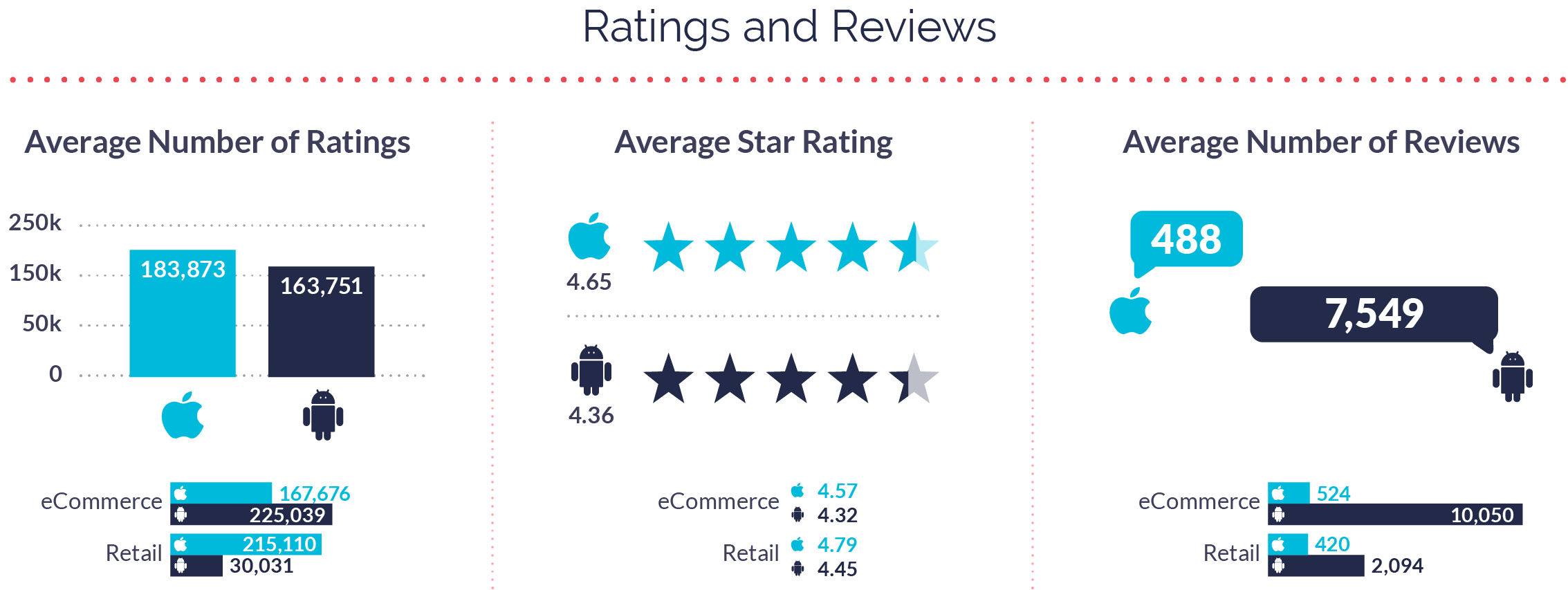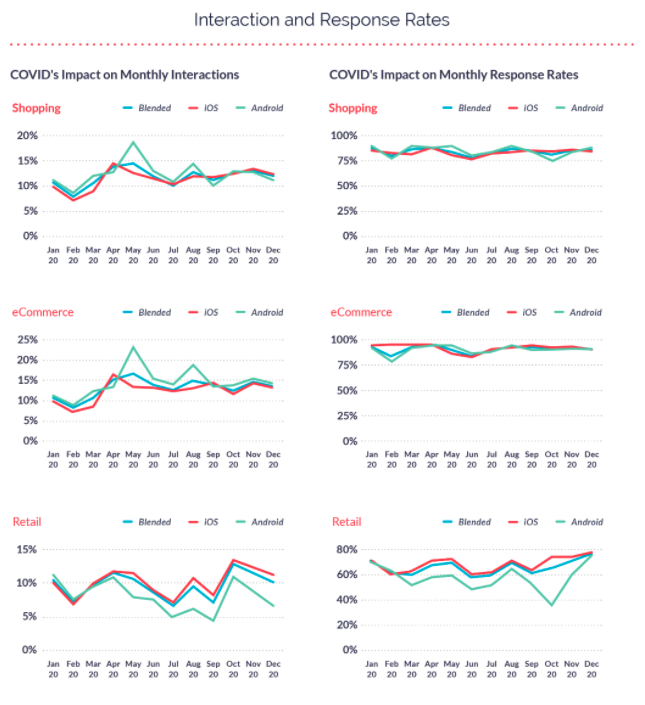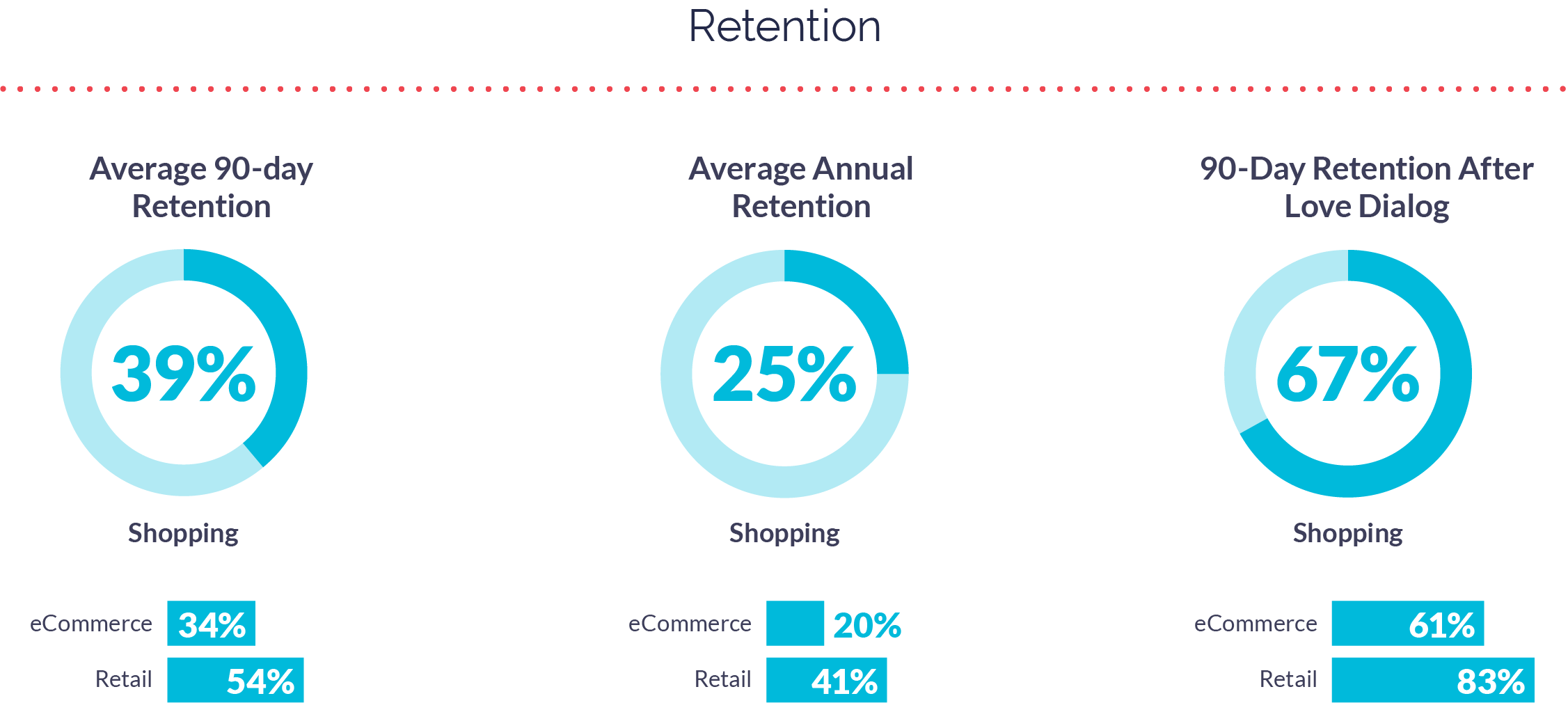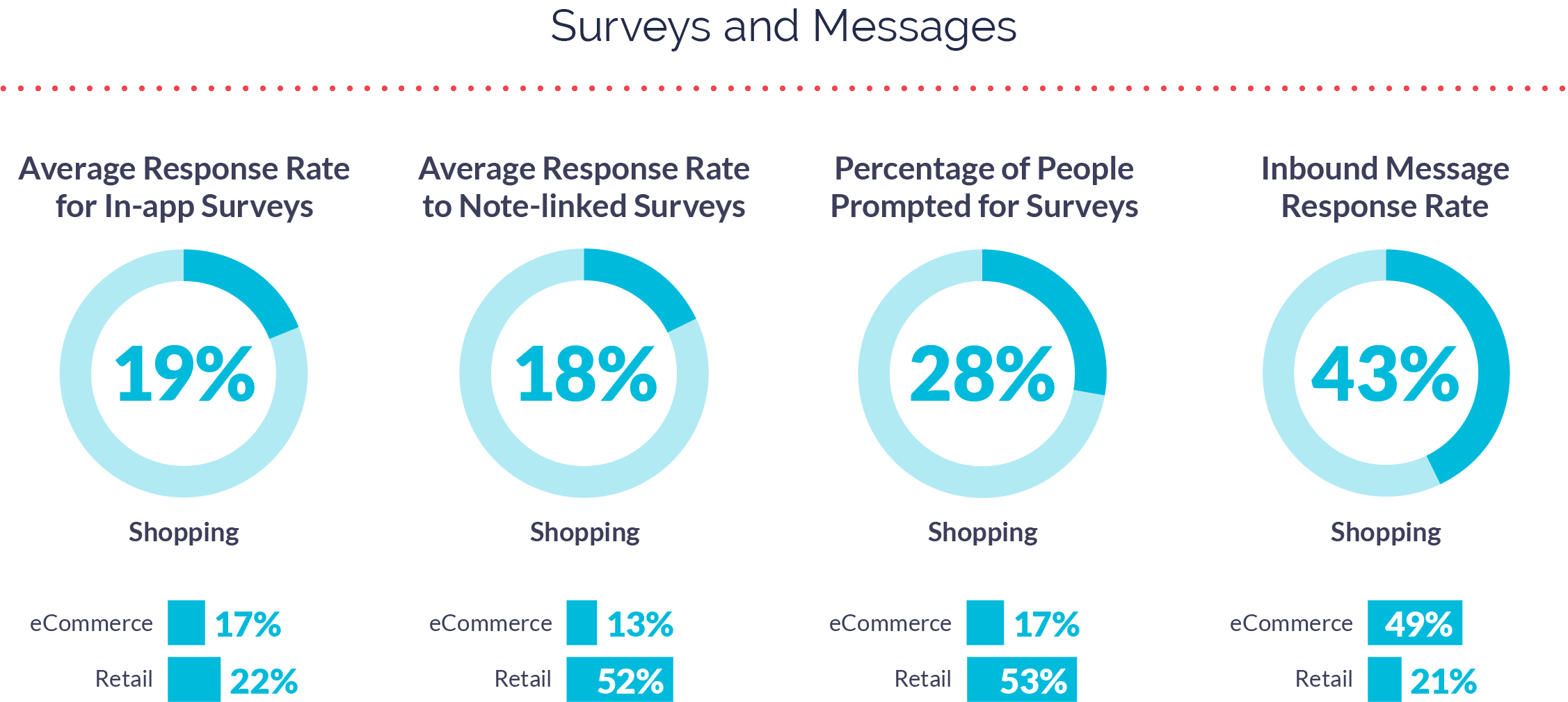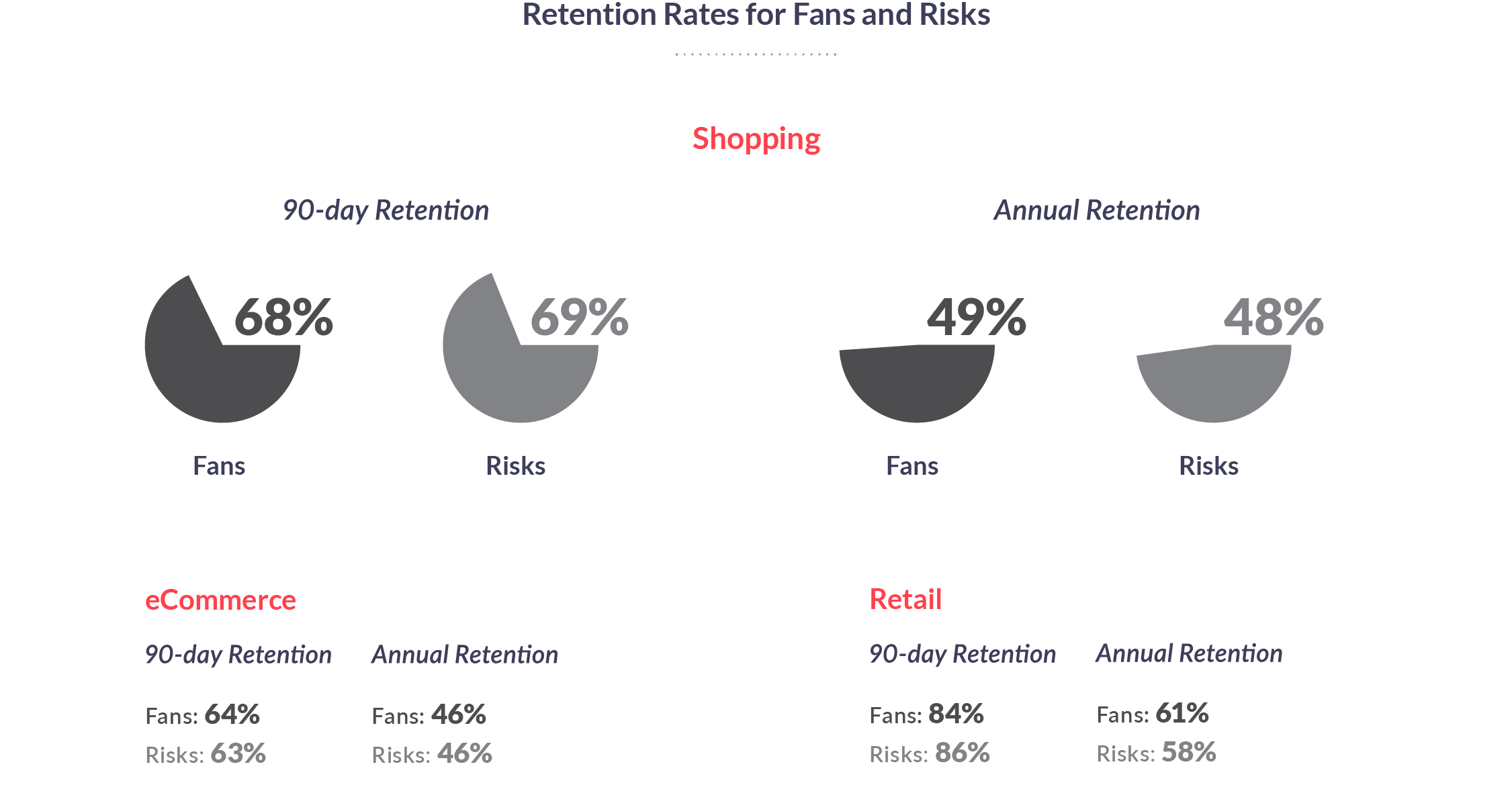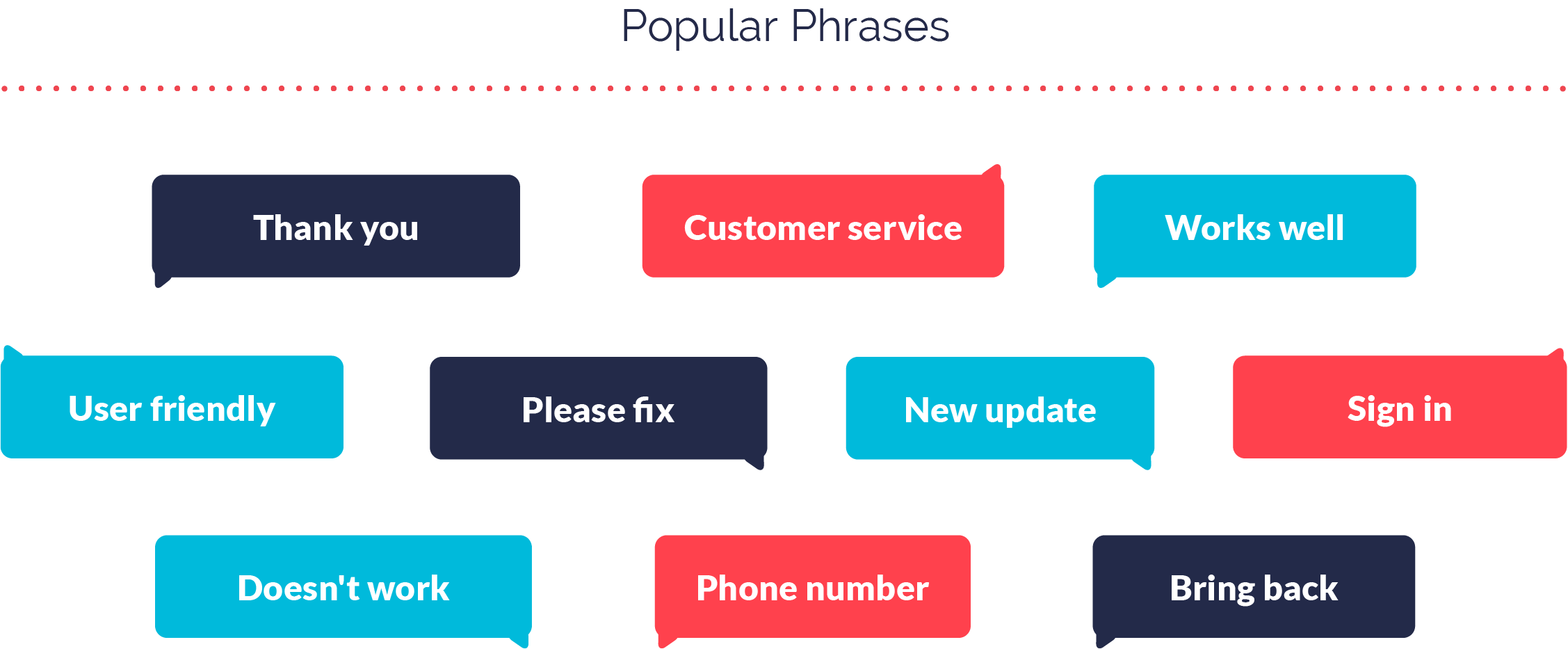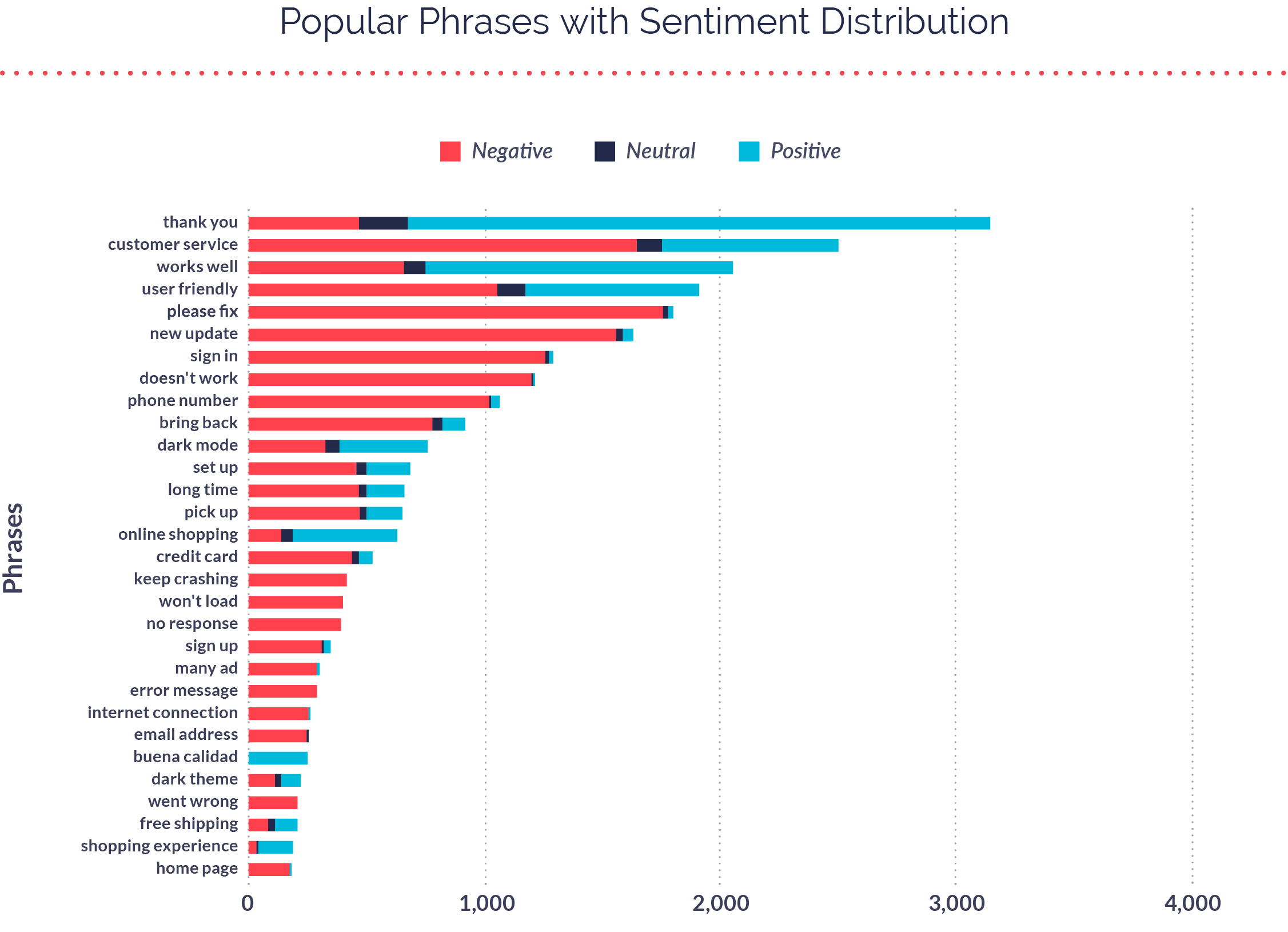Digital shopping exploded in 2020, with an increase in both consumers and usage. While some companies took a hit due to widespread lockdowns, those who swiftly adopted the digital shift won market share and, ultimately, new loyal customers during a difficult time for consumers.
In our 2021 Mobile App Engagement Benchmark Report, a study of 1,000 apps across a billion+ app installs, we take a close look at apps in the Food and Drink category. In our data, Shopping apps are divided into two subcategories due to vastly different consumer behavior: eCommerce (transactions are completed electronically and experiences are solely digital) and Retail (connected digital and brick-and-mortar consumer experiences).
Read on for data-supported research and benchmarks Retail and eCommerce apps should focus on in 2021 and beyond based on what was learned from a year like no other.
2021 Engagement Benchmarks for Retail and eCommerce Apps
Ratings and Reviews
Retail and eCommerce apps had comparable ratings to macro averages, and more reviews than average, particularly in eCommerce. The average Shopping iOS app saw 183,873 app store ratings, received a 4.65 star rating, and had 488 app store reviews. Android apps saw 163,751 app store ratings, received an average 4.36 star rating, and had 7,549 app store reviews.
Similarly to previous years, iOS apps again enjoyed a higher overall rating; however, Android narrowed the gap between two in 2020, likely due to the new weighting system that Google employed in late 2019.
The big takeaway for Shopping apps is while you can’t mitigate every negative rating or comment, having a plan in place to directly receive negative feedback will help you improve your numbers.
Interactions and Response Rates
Pandemic-driven lockdowns had a positive impact on interactions for Retail and eCommerce apps. Rather than scrambling to close growing consumer retention holes, they focused on testing new ways to engage the increased number of consumers in their apps.
Both subcategories ended up with a higher percentage of monthly interactions at year-end than in January. Both eCommerce (94%) and Retail (84%) saw consistently high consumer response rates (macro average is 92%) throughout the year in response to the influx of new interactions.
Retention
The new interactions led to improved retention. Shopping apps typically see relatively low retention due to high marketplace competition and consumers being loyal to multiple brands at the same time.
While Shopping apps saw a 90-day retention rate (39%) and annual retention rate (25%) below or comparable to macro averages (48% and 35%), those numbers are impressively high for the Shopping category. Retail apps stood out even further, beating both the macro 90-day retention rate (54% compared to 48%) and annual retention rate (41% compared to 35%).
Despite the differences between subcategories, the Love Dialog had a positive impact on both consumer groups. When engaged with a Love Dialog, 90-day retention grew to 61% in eCommerce and 83% in Retail.
Surveys and Messages
One interaction Retail and eCommerce apps used to attain such high retention rates was surveys, used to regularly touch base with consumers. Their average response rate of 19% was above the macro average of 16%.
Retail apps fully embraced the mobile shift forced upon them in 2020 by surveying over half (53%) of their consumers—a 112% increase from the macro average (25%)!
Shifts in Consumer Emotion
A big win in the Shopping apps category is that, collectively, there were few consumers who shifted from Fan to Risk (-2%, macro average is -4%). Specifically within eCommerce, more consumers shifted from Risk to Fan (+1%), which is quite difficult to achieve. Understanding shifts in emotion and proactively engaging with consumers to get ahead of them is a big opportunity for Shopping and eCommerce brands in 2021 and beyond.
Popular Phrases
Here are the 10 most popular phrases for both iOS and Android throughout 2020.
When we layer on sentiment distribution, you can see the difference between negative, neutral, and positive sentiment across app store reviews.
Working in Mobile Retail and eCommerce in 2021
As the data shows, 2020 was a turbulent year for eCommerce and Retail businesses—but those who embraced the shift to mobile came out the other side triumphantly. As restrictions lift and consumers begin to engage with Shopping brands in person once again, teams must continue adjusting their digital and in-person strategies to prioritize safety, consumer comfort, and of course, revenue. Mobile will play a crucial role in this transition as it did for all of 2020.
For more on how mobile teams in Shopping can win back market share and improve feedback-based innovation, read our 2021 Mobile App Engagement Benchmark Report.

